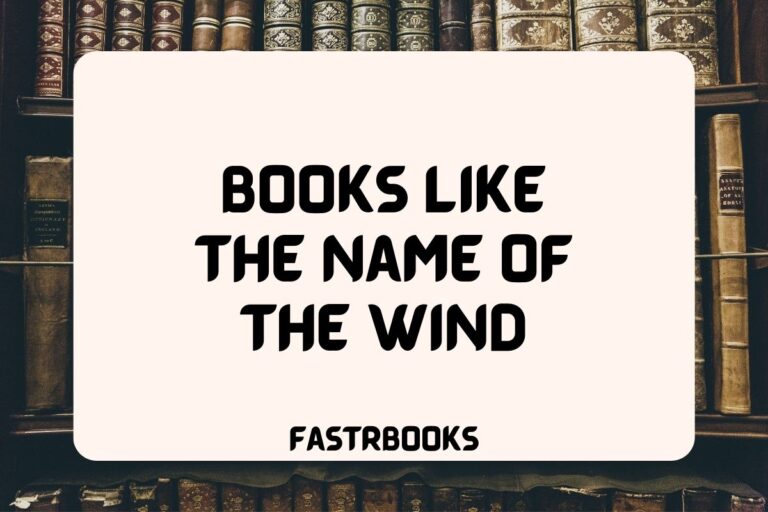18 Books Like No Longer Human

“No Longer Human” by Osamu Dazai is a novel that delves deep into the psyche of its protagonist, exploring themes of alienation, existential despair, and the struggle to find one’s place in society.
For those who have been moved by the emotional depth and psychological insight of the story, here is a curated list of some similar books that share similar themes and offer thought-provoking narratives.
From explorations of identity and isolation to examinations of the human condition, these books resonate with the spirit of Dazai’s masterpiece, inviting readers on a journey of self-discovery like no other.
Whether you’re drawn to introspective fiction or searching for stories that illuminate the complexities of the human experience, this list promises to satisfy your literary cravings and perhaps even unearth new perspectives on life and existence.
Books Like No Longer Human
1. The Stranger by Albert Camus
“The Stranger” is a novel by French author Albert Camus, first published in 1942. It tells the story of Meursault, a French Algerian who is emotionally detached from society and indifferent towards his own life, leading to a series of events that culminate in a murder.
The narrative explores themes of existentialism, absurdity, and the human condition, questioning the meaning of life in a seemingly indifferent universe.
Major Similarities:
Like “No Longer Human,” “The Stranger” delves into the psyche of its protagonist, exploring themes of alienation, existential despair, and the struggle to find meaning in life. Both novels feature protagonists who are detached from society and reflect deeply on their own existence and morality.
The existential themes and the introspective nature of both narratives make them resonate well with readers interested in philosophical literature.
2. The Bell Jar by Sylvia Plath
“The Bell Jar” is a semi-autobiographical novel by American author Sylvia Plath, published in 1963.
It follows the story of Esther Greenwood, a young woman who is undergoing a mental breakdown, exploring her struggles with identity, societal expectations, and her own ambitions. Plath uses the metaphor of the bell jar to describe Esther’s suffocating mental illness and her fight for mental freedom.
Major Similarities:
“The Bell Jar” shares with “No Longer Human” a profound exploration of mental illness, societal alienation, and the internal turmoil of its protagonist.
Both books provide a raw and insightful look into the minds of individuals struggling to find their place in a world that seems increasingly alien and oppressive. The candid depictions of mental health issues in both novels offer a deep emotional and psychological connection for readers.
3. Steppenwolf by Hermann Hesse
“Steppenwolf” is a novel by German-Swiss author Hermann Hesse, first published in 1927. The story revolves around Harry Haller, a man who feels deeply divided between his human and wolf-like natures, symbolizing the conflict between his intellectual, spiritual desires and his baser, animalistic instincts.
The novel delves into themes of self-discovery, existential despair, and the quest for spiritual enlightenment.
Major Similarities:
Similar to “No Longer Human,” “Steppenwolf” explores the inner conflict and existential crises of its protagonist. Both novels address the themes of alienation from society, the search for identity, and the struggle to reconcile different aspects of one’s nature.
The philosophical underpinnings and the introspective journey of the characters in both books make them compelling reads for those interested in the complexities of the human psyche.
4. Notes from Underground by Fyodor Dostoevsky
“Notes from Underground” is a short novel by Russian author Fyodor Dostoevsky, published in 1864. The narrative is presented as the memoir of a bitter, isolated narrator who has withdrawn from society into his own ‘underground.’
The book is divided into two parts: the first is a monologue focusing on his views on society and his feelings of alienation, while the second part illustrates his struggles with social interaction and self-worth.
Major Similarities:
Both “Notes from Underground” and “No Longer Human” feature protagonists who are deeply introspective, isolated from society, and struggle with feelings of inadequacy and alienation.
The exploration of the darker aspects of human nature, along with a critical view of society and its impact on the individual, are central themes in both novels. The introspective and often pessimistic tone of both works offers a deep dive into the complexities of the human condition.
5. Hunger by Knut Hamsun
“Hunger” is a novel by Norwegian author Knut Hamsun, published in 1890. It chronicles the descent of a struggling young writer in Kristiania (now Oslo) who is tormented by hunger, both physically and metaphorically.
The protagonist’s battle with pride, isolation, and the desperation of his circumstances drives him to the brink of insanity, providing a stark exploration of the human psyche and the struggle for survival.
Major Similarities:
Like “No Longer Human,” “Hunger” offers a compelling look into the mind of its protagonist, focusing on themes of existential despair, societal detachment, and the struggle to maintain one’s identity and dignity in the face of abject poverty and marginalization.
Both novels are characterized by their introspective narratives, exploring the depths of human suffering and the quest for meaning in an indifferent or hostile world.
6. A Confederacy of Dunces by John Kennedy Toole
“A Confederacy of Dunces” is a novel by American author John Kennedy Toole, published posthumously in 1980. The story is centered around the comical adventures of Ignatius J. Reilly, an educated but lazy man living with his mother in New Orleans.
Ignatius’s grandiose ideas, coupled with his disdain for modern society, lead him into various conflicts and absurd situations. The novel is celebrated for its rich characterization, its critique of society, and its humor.
Major Similarities:
Although “A Confederacy of Dunces” takes a more comedic approach than “No Longer Human,” both novels feature protagonists with profound criticisms of society and feelings of alienation. Ignatius, like Oba Yozo, navigates through life feeling out of sync with the world around him.
The themes of societal estrangement and the struggle to find one’s place within it are prevalent in both stories, making them resonate with readers who appreciate deep social commentary mixed with personal narrative.
7. The Catcher in the Rye by J.D. Salinger
“The Catcher in the Rye” is a novel by American writer J.D. Salinger, published in 1951. It narrates a couple of days in the life of Holden Caulfield, a teenager from New York City, who has been expelled from his prep school.
Disillusioned and cynical, Holden searches for truth and rails against the “phoniness” of the adult world, while dealing with issues of identity, belonging, and loss.
Major Similarities:
Similar to “No Longer Human,” “The Catcher in the Rye” explores themes of alienation, societal critique, and the pain of growing up. Both Holden and Oba Yozo are disillusioned with the world around them and struggle with their sense of identity and place in society.
The introspective and critical view of society presented in both novels speaks to readers who are navigating their own path through the complexities of adolescence and adulthood.
8. Crime and Punishment by Fyodor Dostoevsky
“Crime and Punishment” is a novel by Russian author Fyodor Dostoevsky, first published in 1866. The narrative focuses on Rodion Raskolnikov, a former student living in poverty in St. Petersburg, who formulates and executes a plan to kill an unscrupulous pawnbroker for her money.
The novel delves into Raskolnikov’s psychological state before, during, and after the crime, exploring themes of guilt, redemption, and the search for moral absolutes.
Major Similarities:
“Crime and Punishment” and “No Longer Human” share a deep exploration of their protagonists’ inner turmoil and moral dilemmas. Both novels examine the consequences of societal detachment and the struggle with personal guilt and redemption.
The psychological depth and existential themes present in both books offer a compelling look at the darker aspects of human nature and the quest for understanding in a confusing world.
9. The Metamorphosis by Franz Kafka
“The Metamorphosis” is a novella by Czech writer Franz Kafka, first published in 1915. It tells the story of Gregor Samsa, a traveling salesman who wakes up one morning to find himself transformed into a giant insect.
The story explores Gregor’s attempts to adjust to his new condition and the way his family reacts to his transformation, ultimately delving into themes of alienation, identity, and the human condition.
Major Similarities:
Both “The Metamorphosis” and “No Longer Human” explore the theme of alienation but through different lenses. Gregor’s physical transformation into an insect and Oba Yozo’s psychological detachment from society both serve as metaphors for the profound sense of isolation and not belonging.
The exploration of identity and the struggle to maintain one’s humanity in the face of dehumanizing circumstances are central to both narratives, making them poignant studies of the alienated individual.
10. The Fall by Albert Camus
“The Fall” is a novel by French writer Albert Camus, published in 1956. The book is set in Amsterdam and is presented as a series of monologues by the narrator, Jean-Baptiste Clamence, a former Parisian lawyer, who reflects on his life and his gradual “fall” from grace, leading to his self-imposed exile.
The narrative delves into themes of guilt, hypocrisy, and the human tendency towards judgment, both of oneself and others.
Major Similarities:
“The Fall” and “No Longer Human” both present a deep, introspective look into the protagonists’ psyche, focusing on themes of guilt, existential despair, and the critique of societal norms.
Both Clamence and Oba Yozo undergo a profound personal crisis that forces them to confront their own flaws and the illusions of their lives.
The philosophical and existential exploration in both novels challenges the reader to reflect on the nature of human existence and the quest for authenticity.
11. Journey to the End of the Night by Louis-Ferdinand Céline
“Journey to the End of the Night” is a novel by French author Louis-Ferdinand Céline, first published in 1932.
The story follows the life of Ferdinand Bardamu, from his experiences in World War I, through his travels to Africa, the United States, and his life back in France as a medical doctor. The narrative is marked by its cynical view of human nature and society, using dark humor to explore the absurdity of the human condition.
Major Similarities:
Like “No Longer Human,” “Journey to the End of the Night” explores the depths of cynicism and disillusionment with society. Both novels feature protagonists who are deeply critical of the world around them and who navigate through life with a sense of detachment and existential dread.
The stark portrayal of human suffering and the critique of societal norms and values resonate strongly between the two works, appealing to readers who appreciate a bleak but insightful look at the human experience.
12. Demons by Fyodor Dostoevsky
“Demons” (also known as “The Devils” or “The Possessed”) is a novel by Russian author Fyodor Dostoevsky, first published in 1872. It focuses on the political and spiritual turmoil of 19th-century Russia, depicting a small town infiltrated by political revolutionaries.
The novel explores the destructive consequences of ideologically driven movements on individuals and society, delving into themes of nihilism, manipulation, and the moral disintegration of humanity.
Major Similarities:
“Demons” and “No Longer Human” both delve into the darker aspects of human nature and the profound impact of societal and ideological forces on individuals.
Both novels are concerned with the themes of alienation, moral decay, and the search for meaning in a seemingly indifferent or hostile world. The psychological depth and exploration of existential despair in both books offer a compelling narrative on the human condition and the struggle for identity and purpose.
13. The Sorrows of Young Werther by Johann Wolfgang von Goethe
“The Sorrows of Young Werther” is a novel by German author Johann Wolfgang von Goethe, first published in 1774. It is a collection of letters written by Werther, a young artist of a sensitive and passionate temperament, to his friend Wilhelm.
The letters detail Werther’s unrequited love for a married woman, Lotte, leading to his growing despair and eventual suicide. The novel is a seminal work of the Sturm und Drang movement, exploring themes of love, nature, and individualism.
Major Similarities:
Both “The Sorrows of Young Werther” and “No Longer Human” explore the intense inner emotional world of their protagonists, focusing on themes of unrequited love, despair, and the protagonist’s inability to reconcile their inner turmoil with the demands of society.
The deep sense of alienation and the tragic outcomes for Werther and Oba Yozo highlight the devastating impact of intense emotional suffering and the struggle to find a place in a world that seems uncaring and oppressive.
14. Siddhartha by Hermann Hesse
“Siddhartha” is a novel by German author Hermann Hesse, published in 1922. It tells the story of Siddhartha, a young Indian man who embarks on a journey to find spiritual enlightenment.
Throughout his travels, Siddhartha encounters various philosophical teachings and ways of life, ultimately discovering that true enlightenment comes from within. The novel explores themes of self-discovery, spiritual seeking, and the nature of existence.
Major Similarities:
While “Siddhartha” and “No Longer Human” take place in vastly different cultural and historical contexts, both novels are profound explorations of their protagonists’ quests for meaning in life. Siddhartha and Oba Yozo both experience deep dissatisfaction with their lives and embark on introspective journeys in search of understanding and peace.
The themes of alienation, the search for self-identity, and the quest for enlightenment in the face of suffering and despair are central to both narratives, offering readers a reflective look at the challenges of finding one’s path in life.
15. Man’s Search for Meaning by Viktor E. Frankl
“Man’s Search for Meaning” is a non-fiction work by Austrian psychiatrist Viktor E. Frankl, first published in 1946. The book recounts Frankl’s personal experiences as a prisoner in Nazi concentration camps during World War II and introduces his psychotherapeutic method, which involves identifying a purpose in life to feel positive about, and then immersively imagining that outcome.
Frankl argues that the primary human drive is not pleasure (as Freud suggested) but the pursuit of what he calls “meaning,” and his insights are based on his observations of both himself and his fellow prisoners.
Major Similarities:
While “Man’s Search for Meaning” is a non-fiction work and “No Longer Human” is a novel, both deal profoundly with the concept of existential despair and the search for meaning in life.
Frankl’s observations and theories about finding purpose even in the most dire of circumstances resonate with the thematic explorations of alienation and the struggle to find one’s place in the world in “No Longer Human.”
Both works offer deep insights into the human condition, particularly the resilience of the human spirit in the face of overwhelming despair.
16. The Perks of Being a Wallflower by Stephen Chbosky
“The Perks of Being a Wallflower” is a novel by American writer Stephen Chbosky, published in 1999.
This coming-of-age story is narrated through a series of letters from a teenager named Charlie to an anonymous recipient.
Charlie, dealing with the trauma of his past and the challenges of his present, navigates his freshman year of high school, exploring themes of friendship, love, and the journey of self-discovery.
Major Similarities:
Both “The Perks of Being a Wallflower” and “No Longer Human” capture the essence of youthful alienation and the quest for identity. Charlie and Oba Yozo, though different in many respects, both experience profound emotional turmoil and a sense of being on the fringes of society.
The exploration of mental health, the impact of trauma, and the struggle to connect with others and oneself are central to both narratives, offering a poignant look at the challenges of growing up and finding one’s place in the world.
17. The Idiot by Fyodor Dostoevsky
“The Idiot” is a novel by Russian author Fyodor Dostoevsky, first published in serial form in 1868-69. It revolves around Prince Myshkin, a young man whose innocence, kindness, and open-heartedness in a corrupt society cause him to be often regarded as an “idiot.”
Myshkin’s return to Russia from a Swiss sanatorium and his entanglement in a love triangle bring to light the conflicts between sincerity and societal cynicism, exploring themes of beauty, morality, and the nature of human relationships.
Major Similarities:
Similar to “No Longer Human,” “The Idiot” delves into the effects of societal expectations and the clash between innate goodness and the often harsh reality of human society.
Both Prince Myshkin and Oba Yozo are deeply affected by their attempts to navigate a world that seems at odds with their inner selves.
Themes of existential inquiry, the quest for moral clarity, and the profound sense of alienation from society are explored deeply in both novels, reflecting on the complexities of fitting into a world that one cannot fully embrace.
18. Ghosts by Henrik Ibsen
“Ghosts” is a play by Norwegian playwright Henrik Ibsen, first published in 1881 and first staged in 1882. The play deals with the legacy of hidden sins and their impact on the next generation, centered around Mrs. Alving’s struggle to free herself and her son from the moral corruption of her late husband.
It explores themes of social hypocrisy, the constraints of morality, and the quest for personal liberation in the face of societal norms.
Major Similarities:
While “Ghosts” is a play and “No Longer Human” a novel, both works explore the themes of societal hypocrisy and the inner turmoil caused by living in conflict with one’s own truths and the expectations of society.
The protagonists in both stories face the devastating consequences of repressed desires and the pursuit of authenticity in a world rife with moral duplicity.
Ibsen’s critique of societal norms and the exploration of the individual’s struggle against them echo the existential and societal critiques found in “No Longer Human,” making both works resonate with readers and audiences who question the values imposed by society.






